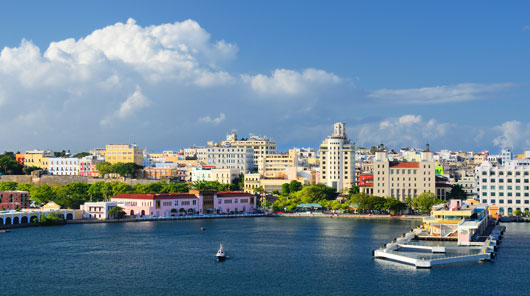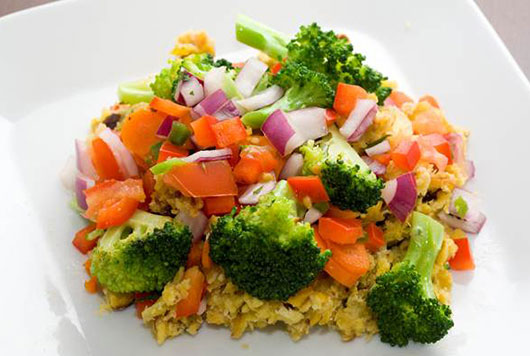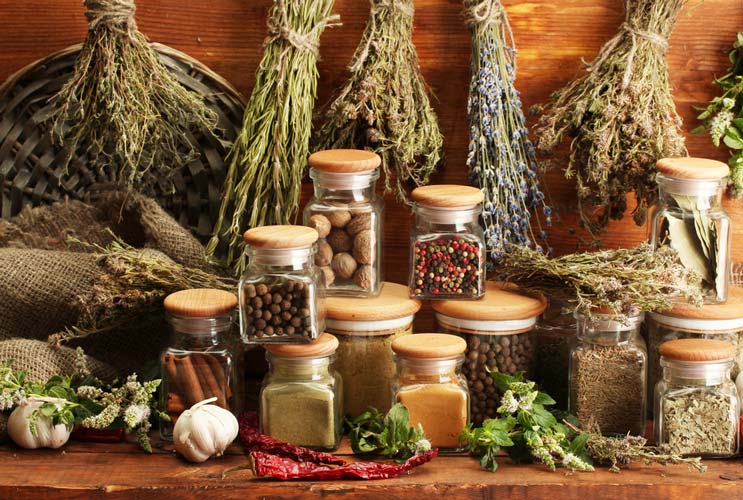
If you’re not sure what mofongo is, let us enlighten you. It’s more than just a fun word to say (though it is really fun to say). It’s actually a delicious dish that is common in Puerto Rican cuisine and use plantains as a main ingredient. Essentially this dish is mashed plantains that are then mixed with a variety of fillings such as fish, meat, vegetables, garlic etc. And while it has its roots in the African dish fufu (dough made from boiled starches that were common in ancient African cooking), Puerto Rico claims it as its own by using fried plantains for the base. When several of Puerto Rico’s top chefs were asked what the must-try dish is when visiting Puerto Rico they all answered “mofongo” without hesitation, claiming: “It’s a staple in Puerto Rico…It goes with everything…It’s the traditional flavor of Puerto Rico…The history of it… the way we make it…Nobody does it like we do.”
Read Related: 15 Things You Can Only Do in the Caribbean

In terms of how you should serve this dish, you have options, which is part of what makes it so great. According to Epicurious it, “may be served as a starchy side or the base of a protein-laden main course. Chicken, shrimp, and pernil, a.k.a. slow-cooked pork shoulder, are traditional toppers. Hearty and homey, this dish combines the best flavors Puerto Rico has to offer. No wonder it’s a national favorite.” There’s a lot to love about this dish, and it’s certainly a must-try if you’re hoping to get any sort of authentic experience with Puerto Rican culture and cuisine, but there is a potential downside to this dish—it can be really unhealthy. As with so many recipes that taste amazing, the ingredients aren’t exactly good for you. The classic recipe uses a ton of oil (about 2 cups) to fry the plantains, plus pork rinds, which are also fried, and bacon. So far, it’s a lot of flavor but also a lot of calories and fat.
The good news is that you can make this traditional dish with a healthy spin—you just need to make a few substitutions that will add some nutrient-rich ingredients without subtracting any flavor or personality from your mofongo.

Step one: reduce the amount of oil you use. This recipe from José Yanza; a participant in the NYC Green Cart Initiative, uses only 2 tablespoons of oil, compared to about 1-2 cups as some recipes recommend. While 2 TBSP seems like a lot less, it actually goes a long way to flash fry the plantains before you mash them. And you use the same pan (and leftover oil) to cook the healthy veggies that you will serve on top, so the result is a dish that is loaded with fresh veggies and nutrients, but still has the garlicky mashed plantains you know and love.

Another tip: swap bacon and chicharron (fried pork rinds) for turkey bacon, so you still get the salty, savory, indulgent flavor of the bacon but in a much healthier version. In addition, this recipe finds a way to skip oil altogether—that’s right, NO OIL. Blasphemy, you might think. But hear us out. Instead of frying the plantains you boil them in a chicken broth that is loaded with flavor. Adobo adds even more oomph to your plantains before you mash them up, and when you mix in that sautéed turkey bacon you will hardly even notice that you skipped the frying phase of preparation. It’s guilt-free and still oh-so-good.
And last but not least, if you want to enjoy the massive heap of flavors without the massive heap of calories that usually comes with this dish, this non-fried version is for you. You don’t even use a sauté pan or skillet for the plantains; all you need is an oven. You simply wrap plantains with garlic in aluminum foil and then bake for an hour until the plantains are soft and ready to be mashed. Then cook the shrimp in tomato sauce with onions and garlic, and place on top of the mashed plantains once they are ready. Easy, quick, using minimal oil and zero frying. And the result is so delicious you’ll want to make every single day.











